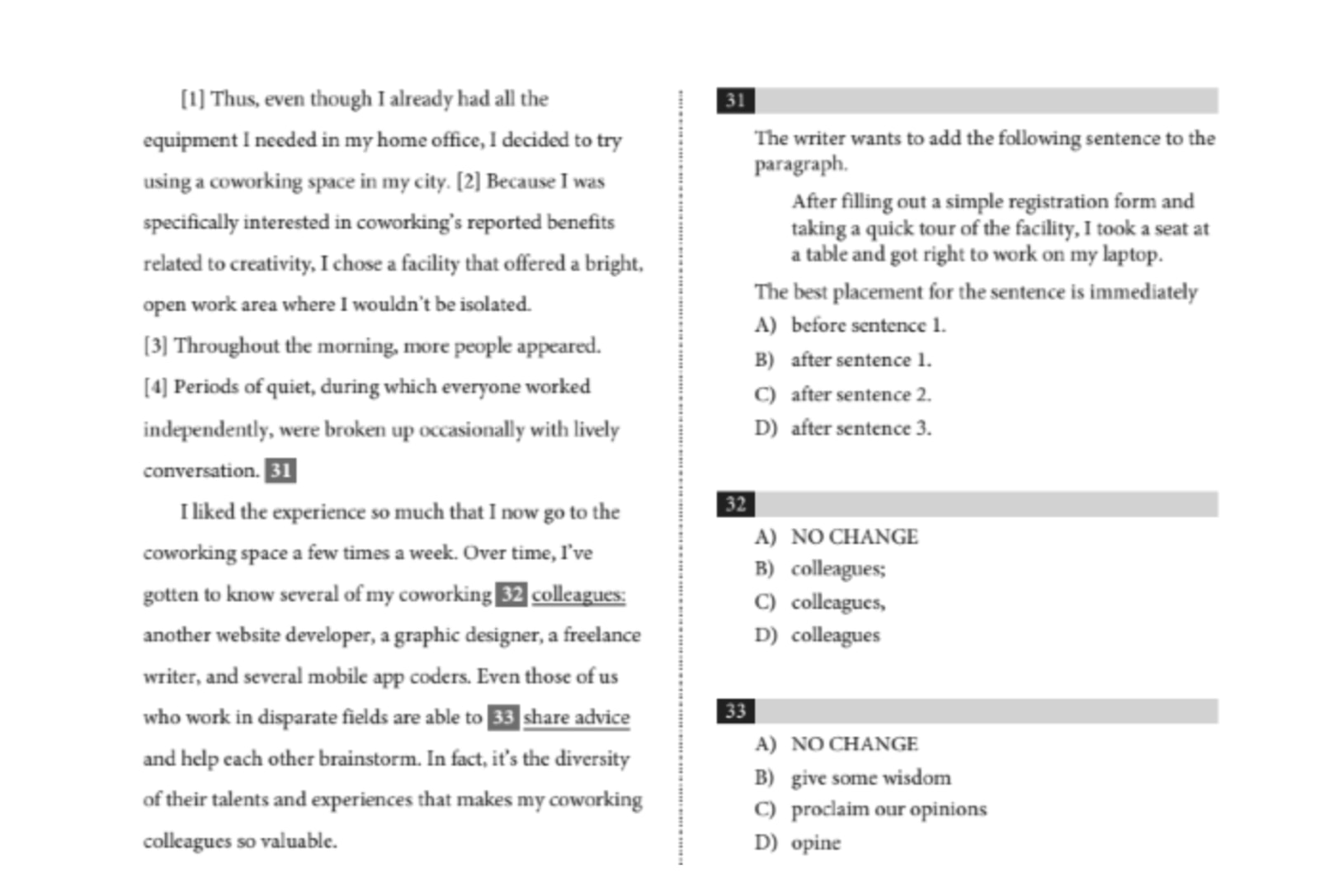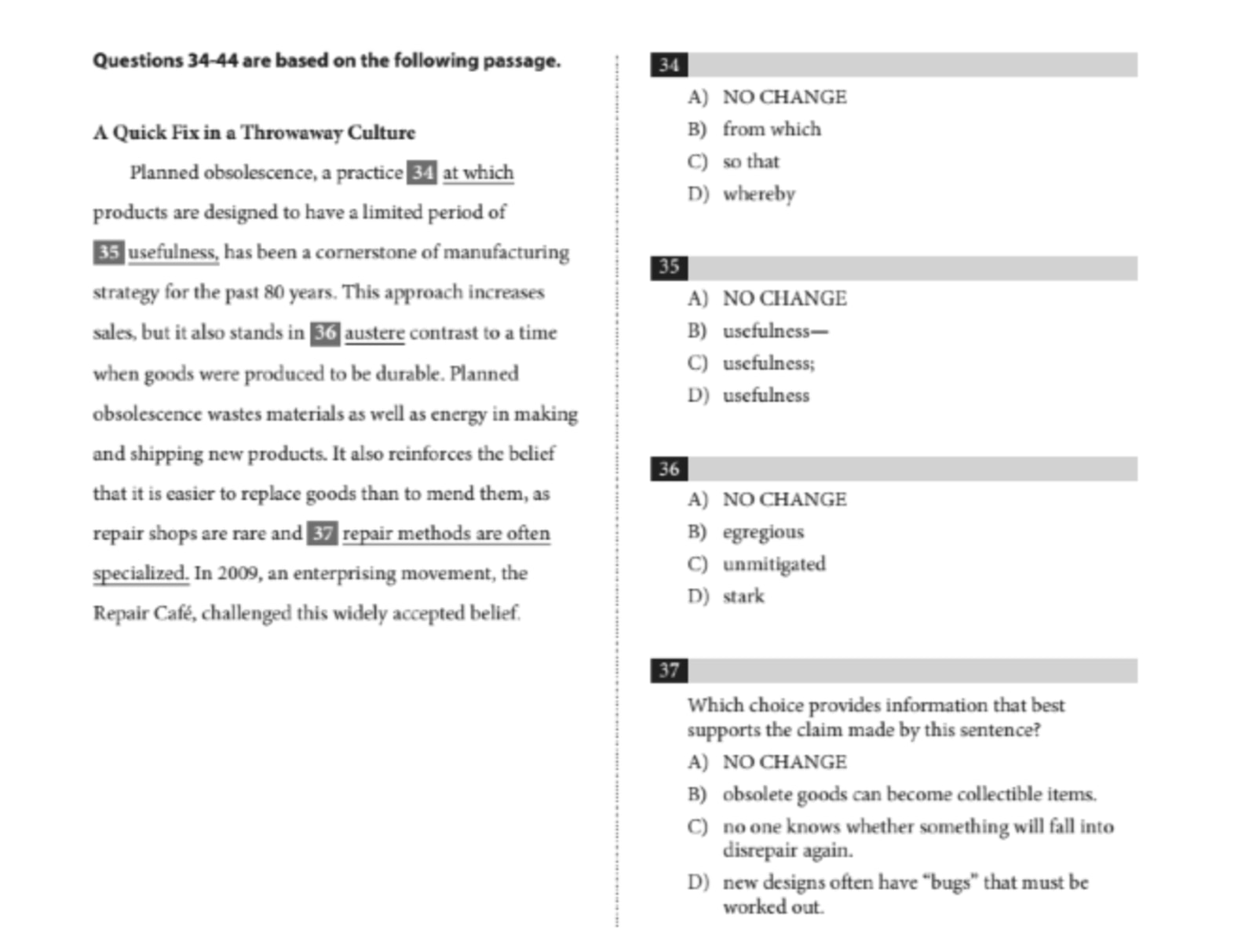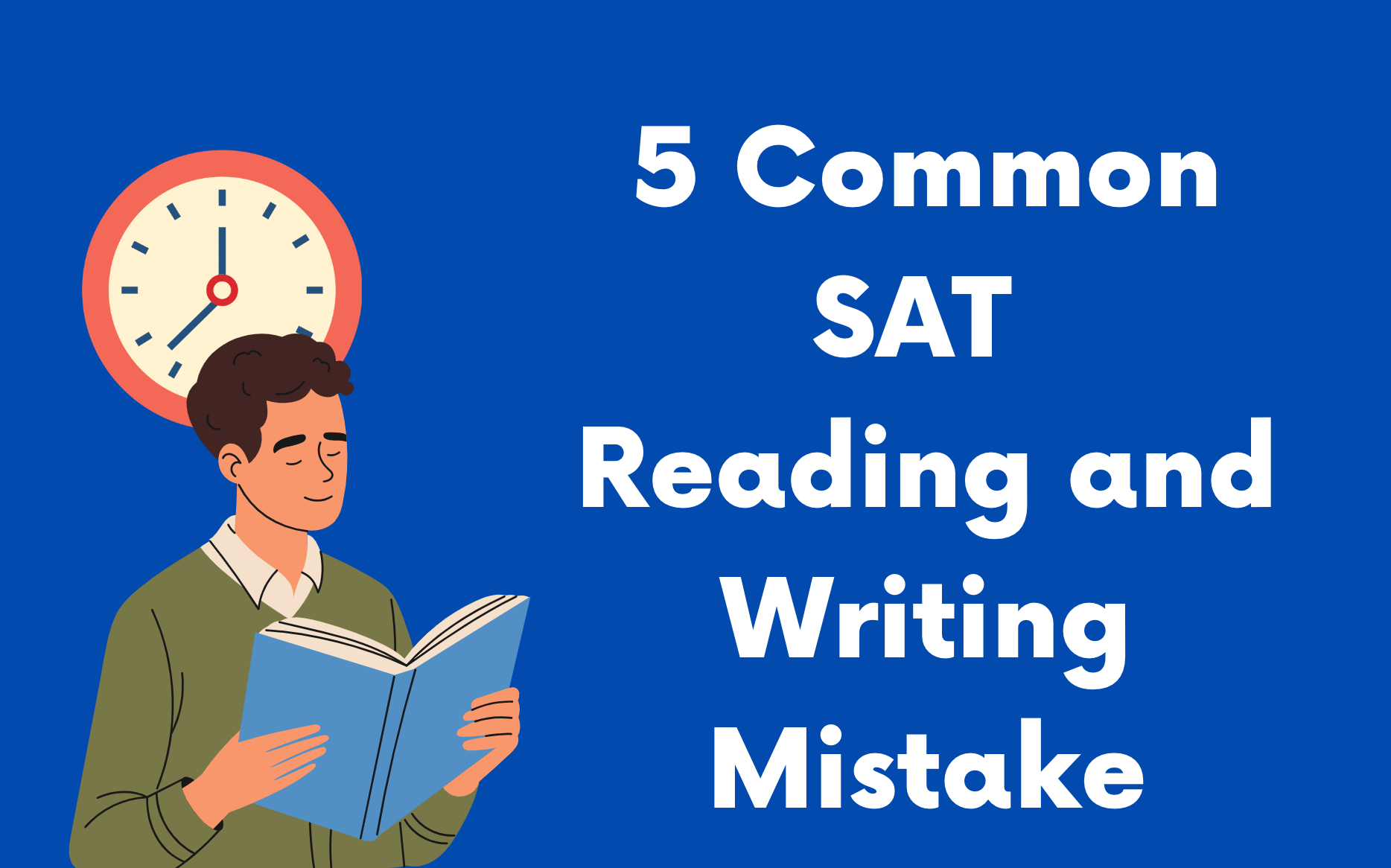The Best Way to Read the SAT Writing Passages
Author
Hartwell
Date Published

The structure of the SAT Writing section is distinct, and it’s likely you haven’t encountered a test with a similar format before. To achieve your target score, you’ll need a tailored approach to handle the passage-based questions effectively.
In this article, I’ll outline different strategies for approaching SAT Writing passages and help you identify the method that suits you best.
Why Do You Need a Specific Strategy for Reading SAT Writing Passages?
The SAT Writing section’s unique format makes it crucial to adopt an approach that minimizes errors. Without the right strategy, students often fall into common traps, such as focusing solely on the underlined parts of sentences without grasping their broader context. Another frequent mistake is rushing through the section, which can lead to careless errors.
Having a well-defined strategy not only boosts your efficiency but also helps you avoid these pitfalls. No matter which method you choose, always make it a habit to read the complete sentence containing the underlined portion. Consistency is key—once you’ve determined the strategy that works best for you, stick to it while practicing.

Top 4 Strategies for Reading SAT Writing Passages
Here are the main strategies you can use to tackle these passages:
1: Paragraph-by-Paragraph Approach
With this strategy, you read an entire paragraph first, then answer the related questions. The advantage of this method is that it ensures you fully grasp the passage’s context before tackling the questions. It also requires you to carefully read complete sentences, which is critical for accuracy.
However, a potential downside is that this approach can take up more time. To determine if this method fits your pace, try it on a practice section and check if you can finish within the 35-minute limit. If you only need a few extra minutes at first, this strategy might still work for you since your speed will improve with practice. However, if you struggle to complete the section in time using this method, it might be better to consider other strategies covered in this article.
Let’s break down how the paragraph-by-paragraph method works with an example from a practice SAT Writing section:

- Using this approach, you would read the first paragraph up to the word “conversation,” then proceed to answer question 31. This strategy is effective for this scenario, as question 31 requires understanding the paragraph’s context.
- Next, you would read the following paragraph before answering questions 32 and 33. On the actual SAT, you would repeat this process for each paragraph in every passage.
If you’re wondering, here are the correct answers for the example questions:
Answers: 31. C, 32. A, 33. A
2: Answer as You Go
In this approach, you read through the passage and stop each time you encounter an underlined portion. You continue reading to the end of the sentence, then answer the corresponding question before moving on. This method is simple and efficient, making it a great option if you find the paragraph-by-paragraph approach too time-consuming.
The primary advantage of the "answer as you go" strategy is its straightforwardness and speed. However, the main drawback is that it might leave you struggling with questions related to paragraph-level analysis or transitions, which often require a deeper understanding of the passage context.
To address this limitation, you can adapt the method: if you encounter such a question, read beyond the immediate sentence to gather the necessary information. Alternatively, you can save these questions for the end, after completing the rest of the passage.

When using this approach, it’s critical to read to the end of each sentence before answering. Let’s look at how this method works in practice:
- Start the passage and stop at "machines," then answer question 26.
- Next, read the following sentence until you reach "presentations," and then answer question 27.
- Finally, read the last sentence of the paragraph and answer question 28.
For question 28, you may need to reference earlier paragraphs or even the following paragraph to eliminate incorrect options. However, if you’ve been reading carefully, you should already have enough context to confidently select the correct answer at this point.
While this approach is efficient in terms of time, it can also lead to errors if you’re unable to recognize when more reading is required to fully understand a question or passage.
Answers: 26. A, 27. B, 28. C
3: Sentence-by-Sentence Approach
The sentence-by-sentence strategy focuses only on sentences that contain underlined portions. While this method may seem time-saving, it has significant downsides. Skipping over the broader context of the passage can make it more challenging to answer questions that require an understanding of the overall writing style, paragraph transitions, or deeper logical connections.
This approach is not recommended if you’re aiming for a score of 650 or higher on the Reading and Writing section. However, it may work for students who are pressed for time or easily distracted by irrelevant details in the passage. If you choose this strategy, make sure to always read the full sentence before answering any questions.
Here’s an example of how this approach works in practice:

- Start by reading the first sentence, then answer questions 34 and 35.
- Move to the next sentence and answer question 36.
- Skip the sentence that begins with "Planned," and instead focus on the next sentence, which includes question 37 and starts with "It also reinforces."
If you encounter a question that cannot be answered without understanding the wider context, you have two options: either skip it and come back later after reading more of the passage, or immediately read additional paragraphs to gather the necessary context. Whichever option you choose, ensure you remain consistent throughout the test.
This method is only recommended as a last resort for students with time management issues, as relying too heavily on sentence-by-sentence analysis can undermine your ability to answer style-based or transition-oriented questions.
Answers: 34. D, 35. A, 36. D, 37. A
4: Passage First
The final approach involves skimming the entire passage first, then returning to answer the questions using a sentence-by-sentence strategy. This method is the most thorough, making it particularly helpful if you struggle with organization or big-picture questions. However, it can also be very time-consuming and may not be practical for all students.
If you’re a fast reader who finds it challenging to answer organization and content-based questions, this thorough strategy might work well for you. On the other hand, if you feel time-pressured or prefer answering questions as you encounter them in the passage, this might not be the best option.

How to Identify and Effectively Use the Right Strategy
Finding the best strategy for reading and answering SAT Writing passages is a process. Here’s a step-by-step guide to help you determine what works for you:
Step 1: Start with the Paragraph-by-Paragraph Approach
For many students, the paragraph-by-paragraph method produces the best results. Although it may not be the right fit for everyone, it’s a good idea to try this strategy first to see how well it works for you.
Step 2: Analyze Your Mistakes to Choose the Best Approach
After completing a practice section, review it thoroughly to understand why you missed specific questions and where your struggles occurred. Use the following questions to guide your analysis:
- Did you run out of time?
If you run out of time with 5 or fewer unanswered questions, consider trying the "answer as you go" strategy.
If you leave 6 or more questions unanswered, you might want to try the sentence-by-sentence method to speed up your process.
- Do you often finish with extra time?
If you finish with more than 3–4 minutes to spare but are missing questions, it’s likely that you’re rushing. Slow down, and ensure you’re carefully reading and comprehending the passage and questions.
- Are you struggling with big-picture questions?
If you find it difficult to answer questions about entire paragraphs or the overall passage, focus on improving your reading comprehension skills and try approaches that encourage you to fully read the content, like paragraph-by-paragraph or passage-first strategies.
Based on your answers to these questions, choose the approach that aligns with your strengths and challenges. You may need to try different methods a few times to determine which one works best for you. Regardless of which strategy you select, always remember to read the entire sentence before answering any questions.
Step 3: Practice Your Chosen Approach Consistently
Once you’ve identified the strategy that suits you best, commit to using it consistently in every practice test and question. Developing and following a system will help you answer questions more accurately and efficiently.
If you find it difficult to stick with a particular approach, feel free to try another method that feels more natural or manageable. It may take some experimentation to identify the most effective strategy, but once you find the right fit, you’ll be better prepared to maximize your score.
Remember, these strategies are only effective if you practice them regularly and apply them consistently. Persistence and refinement will be key to your success.
Related Posts

Struggling with the Digital SAT Reading & Writing section? Discover 5 common mistakes students make and actionable tips to boost your score!

Discover proven strategies to score a perfect 800 on the SAT Reading and Writing sections. Learn essential skills and tips for test day success.